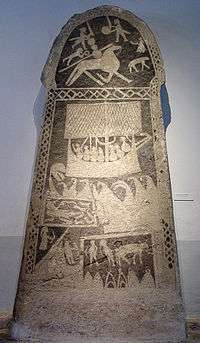Snake pit

Snake pits are places of horror, torture and even death in European legends and fairy tales. The Viking warlord Ragnar Lodbrok is said to have been thrown into a snake pit and died there, after his army had been defeated in battle by King Aelle II of Northumbria. An older legend recorded in Atlakviða and Oddrúnargrátr tells that Attila the Hun murdered Gunnarr, the King of Burgundy, in a snake pit. In a medieval German poem, Dietrich von Bern is thrown into a snake pit by the giant Sigenot – he is protected by a magical jewel that had been given to him earlier by a dwarf.[1]
In common metaphorical usage, a snake pit can mean any institution (such as a school, prison, hospital, or nursing home) or organization led in an inept or inhumane way, or an institution containing many people who may be hostile, untrustworthy, or otherwise treacherous ("snakes"). For example, the film The Snake Pit (1948) tells the story of a woman who finds herself in an insane asylum and cannot remember how she got there.
Terror was used on those deemed insane to try to make them sane again. Lowering the insane into a pit of snakes was a method of treatment.[2]
Popular culture
In film
- A snake pit full of cobras is plot point in Gunga Din (1939)
- The Snake Pit (1948), as mentioned above
- In the film The Naked Prey (1965), after a group of elephant hunters offend a local African tribe who, in response, subject them various methods of cruel and torturous executions. One of the hunters is restrained to the ground with his head exposed to a cobra encircled with fire to provoke the snake.
- Snakes also appear in two of the Fu Manchu films:
- In the film The Brides of Fu Manchu (1966), a snake pit is used as a method of torture and execution. Fu Manchu has a disobedient captive bound to the rim of the snake pit, and another woman captive is hypnotized into feeding her to the snakes. She is then revived and made aware of what she has done. In addition, when ordered to release a prisoner, Fu Manchu responds, "Send her to the snakes!"
- Torture and death by snake venom also appears in The Blood of Fu Manchu (1968), wherein it becomes almost mystical. A legendary Mexican venomous snake, found nowhere else except in a certain lost city, enables women to murder with a kiss, once they have been bitten by the snake on the breast. The (male) victims go blind immediately after being kissed and die on the full moon. Fu Manchu, who has discovered the secret, takes up residence in the lost city where the snakes are, and envenomates beautiful women, who are sent out to eliminate Fu Manchu's enemies with their kisses. Men just die on being bitten by the snakes, but women are immune, and become carriers.
- Punishment using a snake pit is featured in the Film Raiders of the Lost Ark (1981), in which Indiana Jones is trapped during his efforts to retrieve the Ark of the Covenant. Another character, Marion, is then cast into the snake pit with him as punishment. Both make it out alive, although not without facing some highly hazardous situations.
In literature
- A form of Snake pit appears in Deltora Quest, in which the hero, Lief, has to plunge into the pit in order to destroy an evil relic, the Sister of the North. The snakes do not harm him because the Ruby he has repels snakes, but the villain who pursued Lief was not so fortunate.
In music
- Slash, former lead guitarist of rock band Guns N' Roses, formed a band called Slash's Snakepit.
- American Hip-Hop group Gravediggaz made a song called Pit Of Snakes, released on the album The Pick, The Sickle And The Shovel.
In television
- Professional wrestler Jake "The Snake" Roberts had an interview segment on WWE TV shows called "The Snake Pit".
- In Vikings (2013) season 1, episode 6 ("Burial of the Dead"), Ælla of Northumbria executes Wigea by having him thrown into a snake pit.[3]
In other uses
- In the 1970s the Rock Creek Lodge of Clinton, Montana (home of the Testicle Festival and site of filming part of A River Runs Through It on the Rock Creek) was called the Snake Pit because of multiple pet snakes the owner had on display for viewing in a back room area of the lodge. There is now an annual music festival and motorcycle rally at the lodge drawing artists, music enthusiasts, and riders from all over the northwest under the name of the sNaKe PiT Music and Motorcycle Connection.